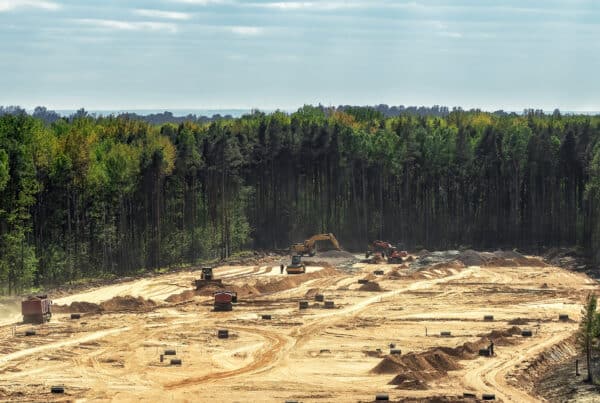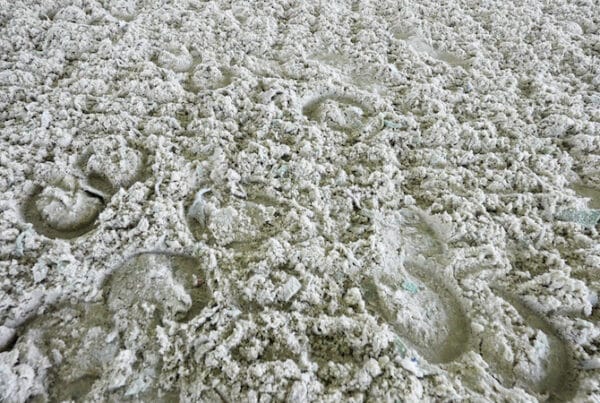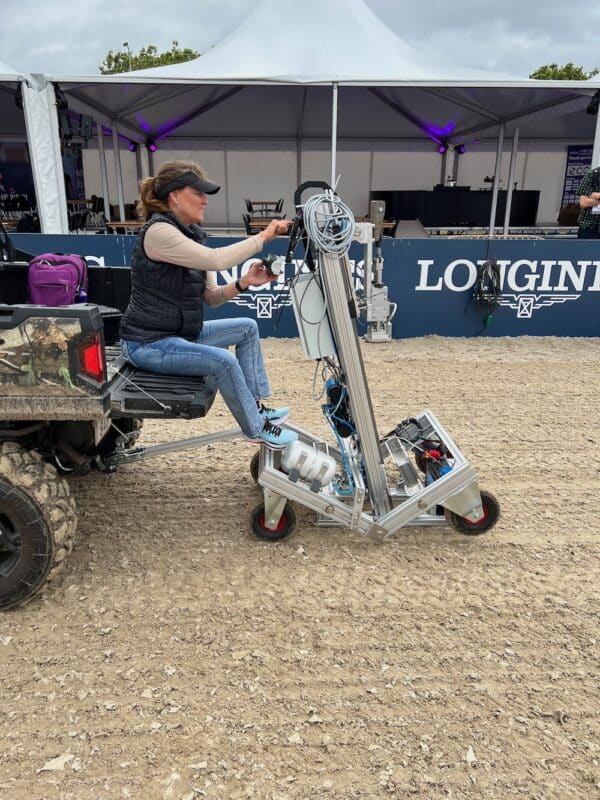
When you’re watching Monday Night Football, have you ever stopped to think about the surface your favorite NFL teams are competing on? Their playing fields, and the surfaces for other major sports including soccer, basketball, golf, and tennis, all undergo extensive standardized testing to ensure safety, consistency, and quality prior to any competition. In some cases, athletes have even refused to play if the competition surface is not adequate. So, why don’t equestrian surfaces undergo the same type of testing?
“Every other major sport has standardized surface testing before competitions,” explains Premier Equestrian President Heidi Zorn. “Unfortunately, unlike other athletes, horses don’t have the ability to complain or to refuse to compete if the surface is bad.”
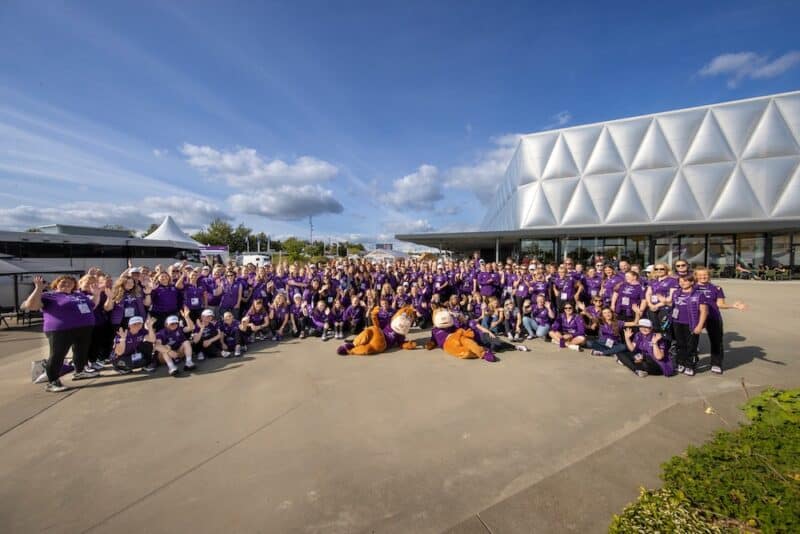
Here in the U.S., equestrian surface testing is not required (yet!) prior to competition, but in Europe the FEI (Fédáration Equestre Internationale) has established a footing standard with the help of Professor Lars Roepstorff and the Orono Biomechanical Surface Tester (OBST) aka the robot hoof. This footing standard and testing were recently employed for the FEI World Championships in Herning, Denmark in August. Zorn was appointed the role of FEI Championship Footing Advisor and assisted Professor Lars Roepstorff in testing all 13 equestrian arenas in Herning.
Ahead, learn more about the FEI Footing Standard, Zorn’s role at Herning, and why equestrian surface testing is so important for both horse and rider.
WHAT IS THE FEI FOOTING STANDARD?
In collaboration with Professor Lars Roepstorff from the Swedish University of Agricultural Sciences, the FEI has established a footing standard to ensure that equestrian competition surfaces are prepared and maintained to a high standard.
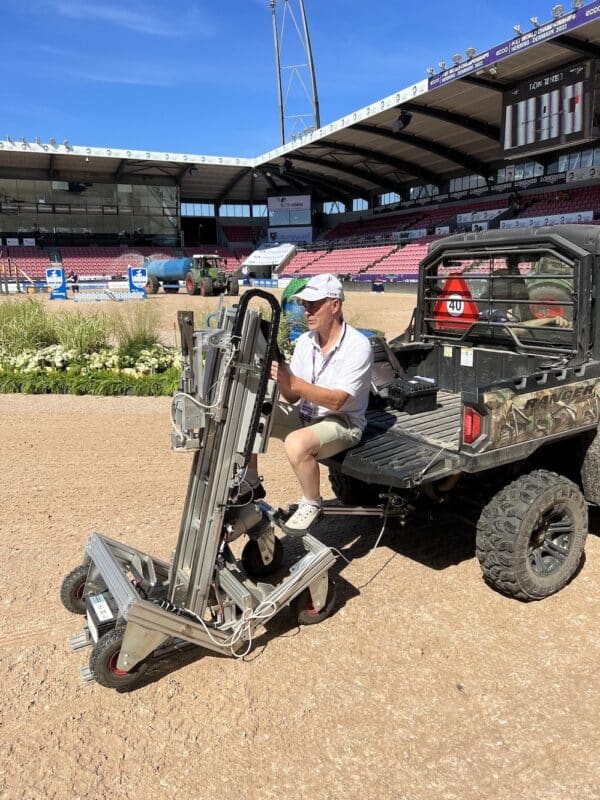
“The footing standard allows us to talk about surfaces in a universal language and the standardized measurements makes it possible to objectively compare footings all over the world,” says Roepstorff. “This makes it easier for different stake holders to choose, construct and maintain a surface to desired properties”
The five properties that characterize a surface are identified as follows:
- Impact firmness
- Cushioning
- Responsiveness
- Grip
- Uniformity
Watch this video to learn more about the FEI footing standard and how surfaces are tested with the OBST.
PREMIER EQUESTRIAN AT THE FEI WORLD CHAMPIONSHIPS
Zorn’s appointment as FEI Championship Footing Advisor at Herning started last spring, when she first began working in tandem with Professor Roepstorff and a team of footing advisors, as well as the Herning organizing and maintenance committees.
“Premier Equestrian was honored to be part of the footing team that helped create the best surfaces possible for the horses and athletes,” says Zorn. “I was part of a large team that ensured quality equestrian surfaces were prepared and maintained throughout the championships. We all met in Herning last March to assess the facility, look at the various locations of the arenas, and test the proposed footing mix. All the sands and fibers used for the arenas were sent to a lab for further testing, including mineral content, water retention and drainage capacity, and the combination of the fibers. Then the footing team discussed the type of bases that would work best for all the surfaces, and more importantly, how much water and maintenance equipment were available.”

Zorn and the rest of the Herning footing team maintained, tested, and oversaw 13 equestrian arenas during the championships, including 3 competition arenas and a combination of 10 warm-up and training surfaces. “The maintenance team and organizing committee pulled off an amazing feat, and the organizing committee went the extra mile to ensure the footing standard by including the FEI testing protocol,” says Zorn. “The maintenance team worked from 6 am until sometimes 3 am to keep the surfaces going. They worked nonstop and tirelessly for weeks.”
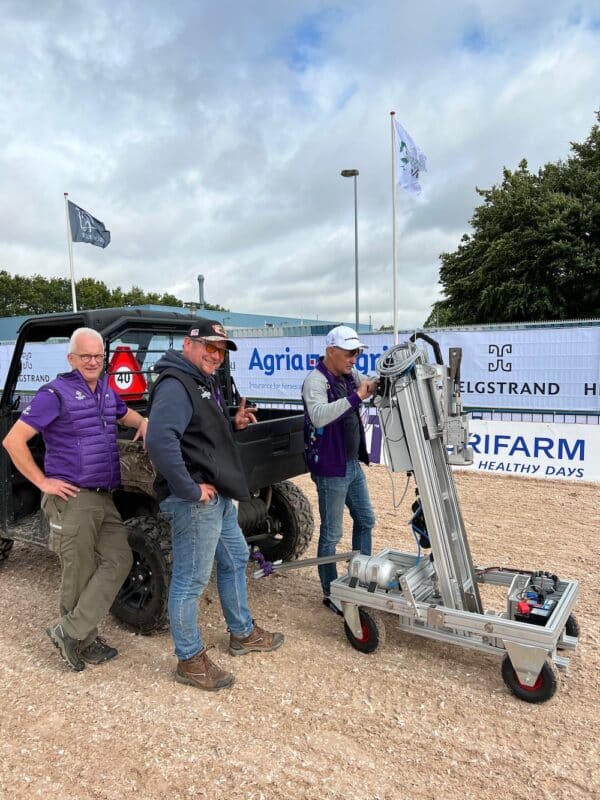
The daily schedule for Zorn and the footing team was rigorous too: they worked from dawn to dark testing the footing for all 13 arenas between the watering, grooming, and event schedules. Each arena surface was tested in multiple spots (20- 30 spots per arena), which culminated in about 200-250 testing drops per day with the OBST machine before and during the championships.
THE EFFECTS OF SURFACES ON EQUINE PERFORMANCE & SAFETY
Zorn was poised for the Footing Advisor role at Herning given that she is recognized as one of the leading footing experts in North America, as well as a sought-after lecturer on sand, additives and footing surfaces, and the effects of footing on equine health and safety. Zorn and the team at Premier Equestrian have been using scientific methods for the past 15 years to test footing products and sand.
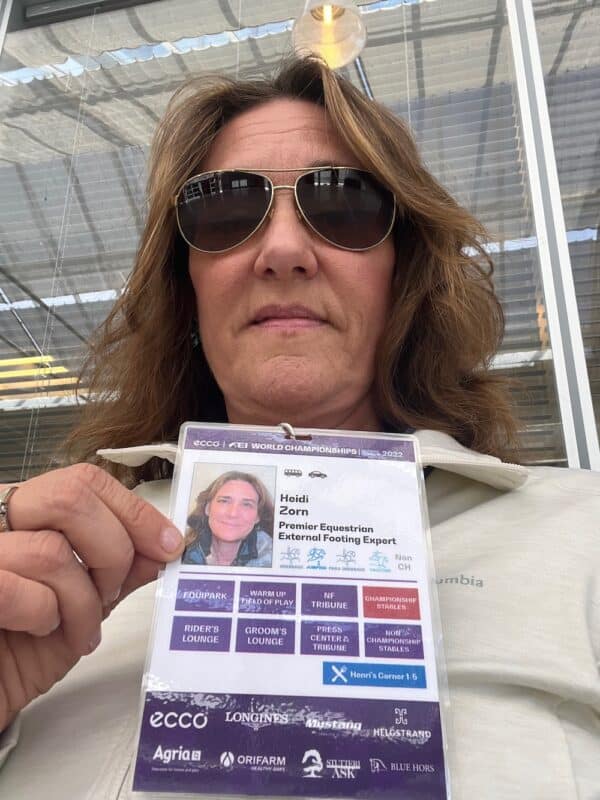
“We were one of the first footing companies in the U.S. to employ lab testing of aggregate materials as they relate to different surfaces,” says Zorn. “We have our own testing lab and we have employed engineers, geologists, and soil labs to better understand our findings. We use this knowledge daily to advise our customers—we have helped thousands of backyard riders, professionals and competition venues and their horses through this science, achieve a functional surface.”
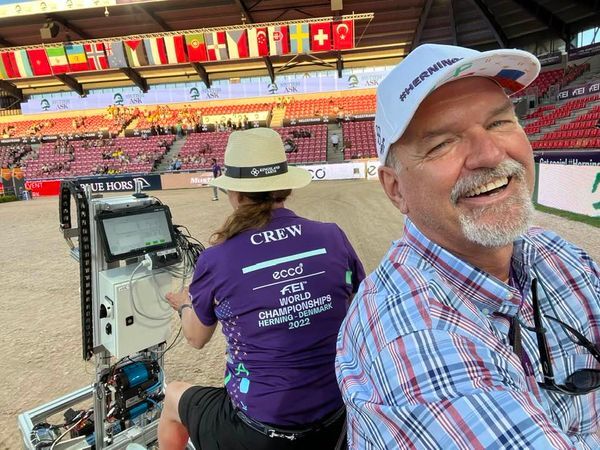
Premier Equestrian is also the exclusive North American distributor of OTTO Sport Base Mats, which were featured in the competition arenas at Herning. The OTTO Sport Arena Base Mat system provides stability, cushion, rebound, and quick drainage, making them ideal for high-level competition like the World Championships. The draining capabilities of the OTTO Sport mats were put to the test at Herning: several days of heavy rains preceded the championships, but the arenas and footing were perfect come time for competition.
HOW SURFACE TESTING BENEFITS THE HORSE AND RIDER
The main objective of testing equestrian surfaces is for the welfare of the horse. Testing can minimize the risk of injury while maintaining performance. The OBST provides data which can help guide maintenance crews on how to prepare the surface. Having these objective measurements can give riders, trainers, and organizers some insight into how the surface will perform in different climatic conditions and competition. In the past, surface and footing conditions have been relied upon as an opinion. “Replacing opinions with facts and data will drive the sport to higher standards,” says Zorn. “We are in the infancy of changes being made for safer horse sport. We are honored to be one of the adopters of the FEI Footing Standard.”



